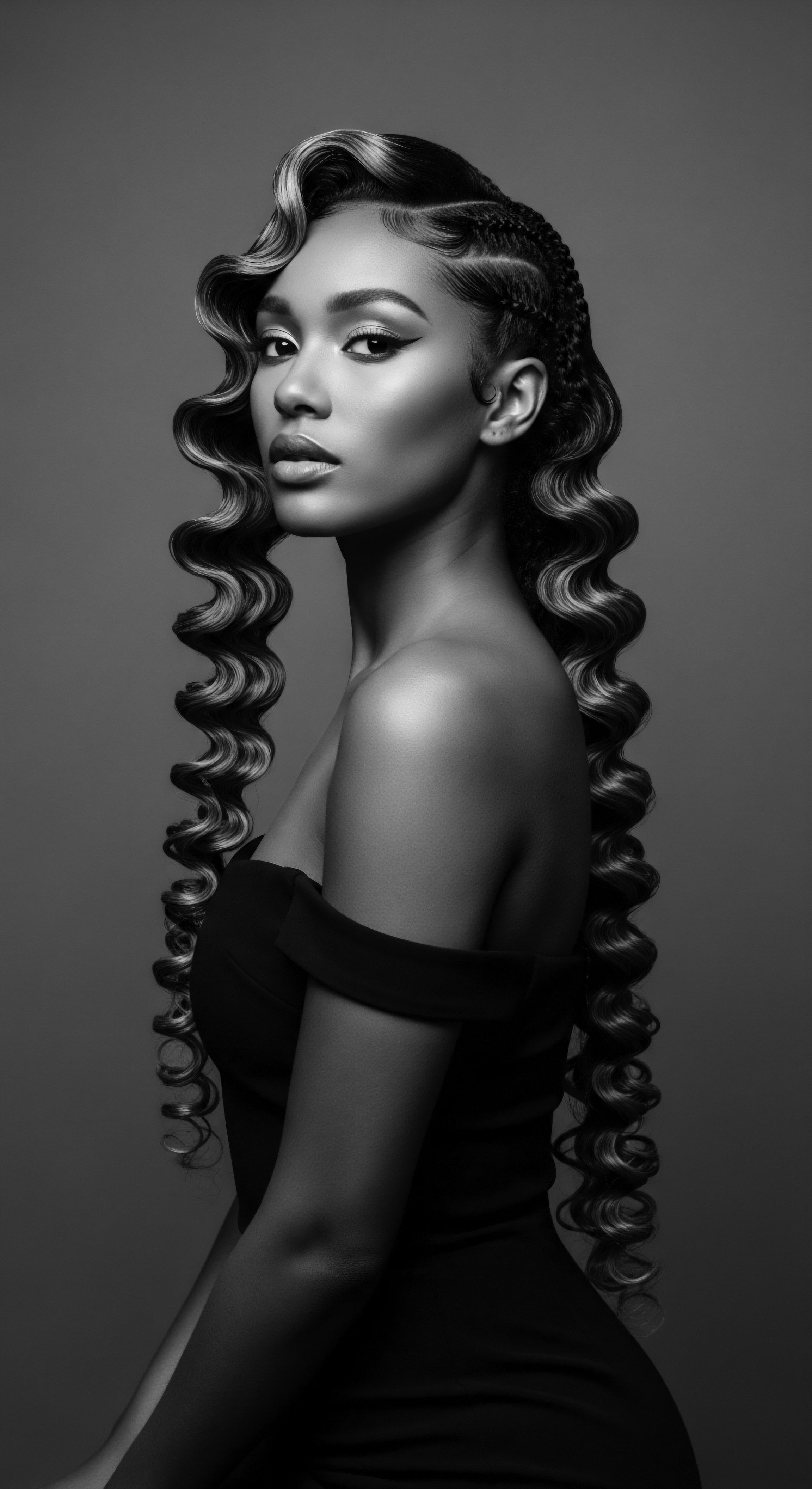
Fundamentals
Uli Art, at its most elemental understanding, presents itself as a venerable artistic tradition originating from the Igbo people of Nigeria. Its historical expression primarily takes the form of body adornment and mural painting, where intricate, flowing lines and abstract motifs grace human skin and architectural surfaces. These ephemeral designs, often rendered with natural dyes derived from the plant itself, serve as visual language. They convey deep societal meanings, communal affiliations, and personal declarations of beauty and identity.
The patterns, frequently inspired by elements of the natural world—plants, animals, and cosmic phenomena—reflect an intimate connection between the human spirit and its environment. It is a creative practice passed through generations of women, embodying a lineage of aesthetic knowledge.
This tradition of Uli, while often presented through its painted forms, extends beyond mere surface application. It represents a philosophical stance towards adornment, where the body, in its entirety, becomes a canvas for expressing one’s internal and external worlds. The lines, often asymmetrical yet balanced, speak to the Igbo worldview of fluidity and dynamism. These designs are not static; they move with the wearer, shifting with the light, subtly changing as the temporary dye fades, embodying a transient yet profound beauty.
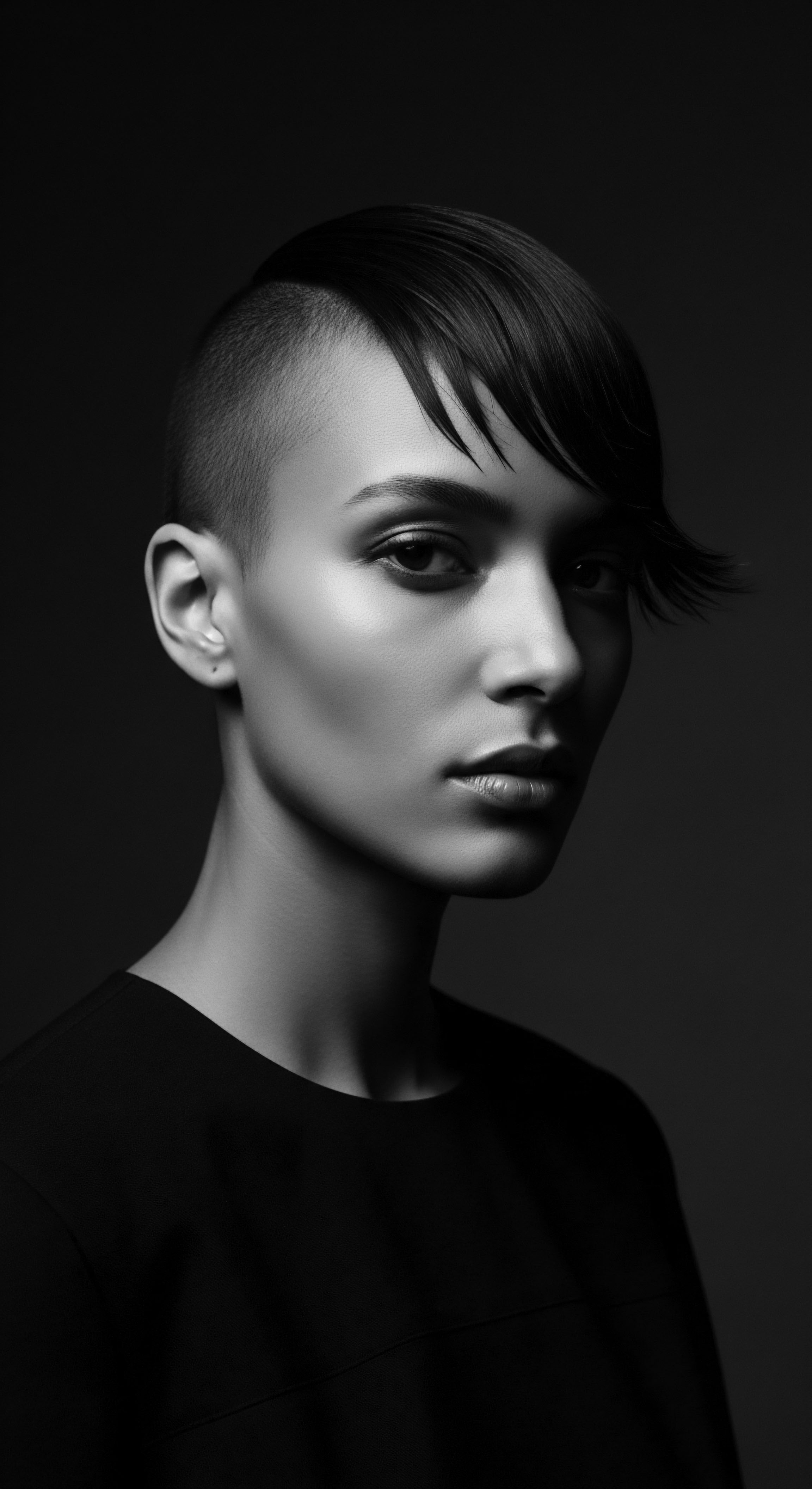
Uli as a Form of Communal Expression
Community stands at the heart of Uli artistry. The creation of these designs is not a solitary endeavor but often a shared experience, particularly during rites of passage or communal celebrations. Women gather, not just to paint, but to share stories, knowledge, and laughter.
This collective engagement reinforces social bonds and ensures the transmission of cultural wisdom. The act of applying Uli becomes a ritual in itself, a moment of connection that strengthens the fabric of the community.
Uli Art embodies a profound connection between self, community, and the natural world, expressed through flowing designs that echo ancestral wisdom on the body.
Understanding Uli through this communal lens allows us to appreciate its deeper significance beyond visual appeal. It is a practice that binds individuals to their heritage, reminding them of collective narratives and shared aesthetics. The patterns, while personal in their final appearance, are drawn from a common well of cultural symbols, ensuring a sense of belonging and continuity.

The Transient Nature of Uli
Unlike permanent tattoos or scarification, Uli body designs are temporary, typically lasting for a few days before gradually fading. This ephemeral quality speaks volumes about the Igbo perception of beauty and existence. It suggests that beauty is not about permanence but about presence, about the celebration of the moment, and the cyclical nature of life.
This transient aspect mirrors the ever-changing rhythms of nature and the human experience itself. It provides an opportunity for constant renewal, for new designs to express evolving identities or mark subsequent life stages.
- Natural Pigments ❉ Uli designs draw their hue from the juices of specific plants, notably various species of the Uli plant (e.g. Rothmania species), yielding a dark, rich indigo or black dye.
- Fluid Lines ❉ A hallmark of Uli is its emphasis on graceful, curvilinear lines, often forming abstract motifs inspired by local flora, fauna, and everyday objects.
- Temporary Adornment ❉ These designs are ephemeral, fading from the skin after a few days, symbolizing life’s transient nature and the constant renewal of personal expression.
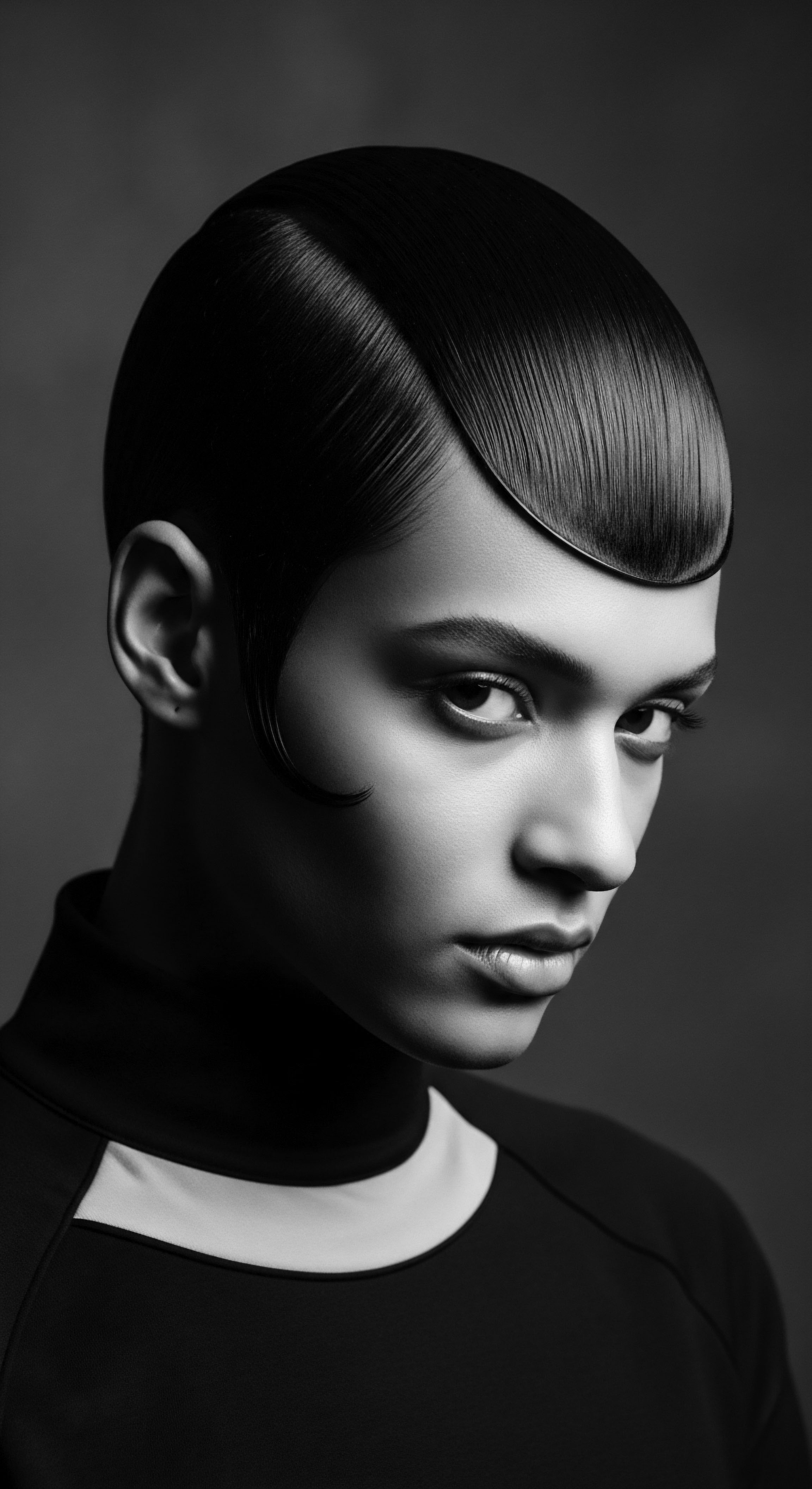
Intermediate
Expanding upon its foundational meaning, Uli Art transcends a simple decorative act. It presents itself as a sophisticated visual language, deeply interwoven with the philosophical underpinnings of Igbo society. The lines and forms, far from being arbitrary, possess a symbolic grammar that communicates social standing, spiritual beliefs, and personal narratives. This art form, primarily associated with women as both creators and wearers, reflects a distinct cultural sensibility where beauty is intrinsically linked to well-being, social harmony, and ancestral connection.
The very practice of Uli body design, particularly for women, often involves intricate preparation of the skin, sometimes including light shaving to ensure a smooth canvas, before the application of the dye. This attention to the surface underscores the thoughtful care invested in the entire process, elevating it beyond superficial ornamentation.
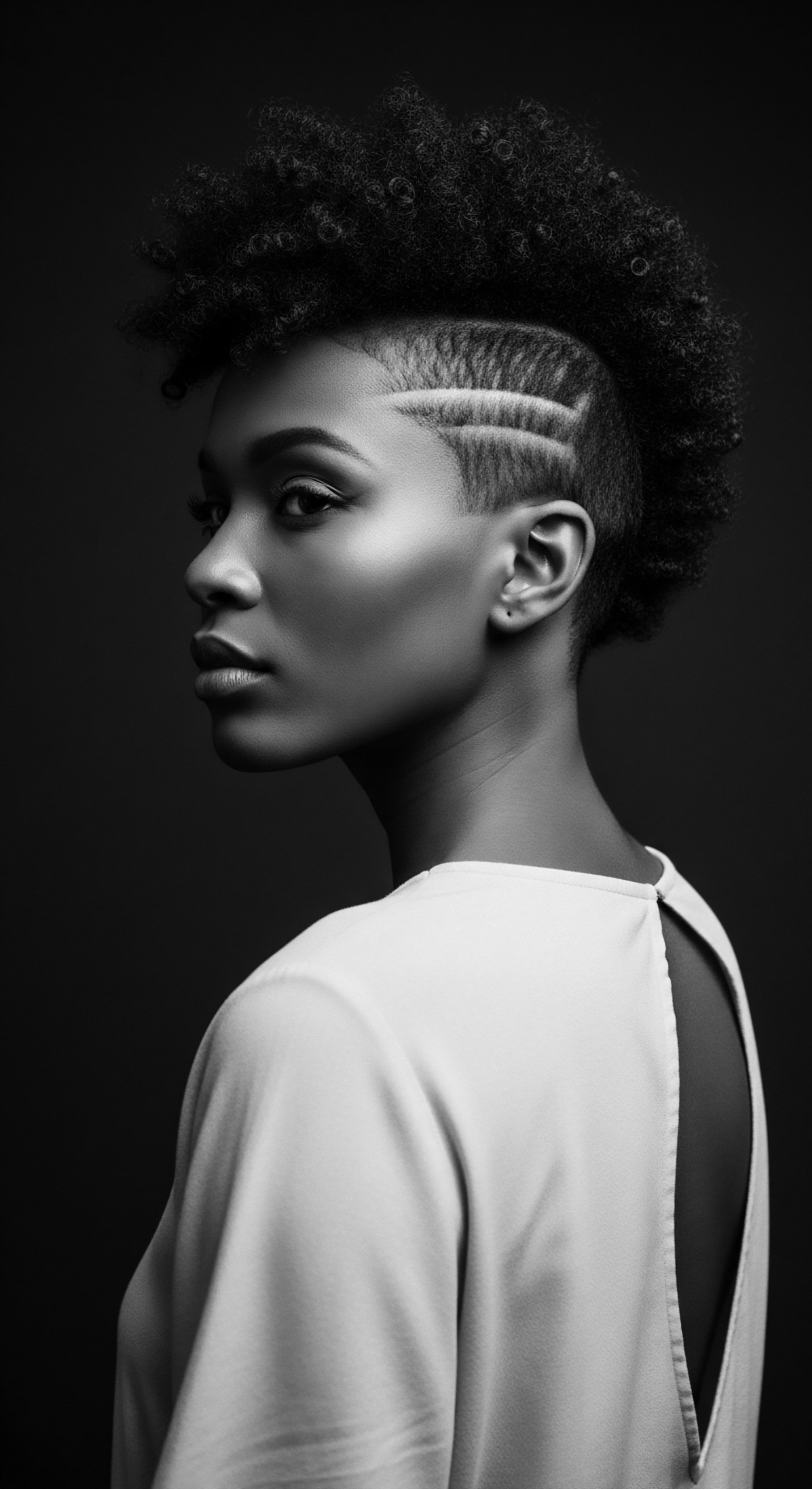
Symbolism Woven into Lines
Each curve, dot, and geometric shape within Uli carries specific meaning, though interpretations can vary subtly across communities and individual artists. These motifs are often drawn from the environment, incorporating stylized representations of animals like snakes or tortoises, plants such as cassava leaves or kola nuts, and even celestial bodies. The arrangement of these elements, and the negative space that gives them breath, create a dynamic visual dialogue. This intricate interplay between form and void is a testament to the aesthetic discernment embedded within the practice.
Consider the use of the kola nut motif, isi nwaoji, which frequently appears in Uli designs. The kola nut itself holds profound cultural significance among the Igbo, symbolizing hospitality, community, and peace. When its essence is captured in a Uli design, it carries those layers of meaning onto the body, making the wearer a living embodiment of these values. This symbolic richness demonstrates how Uli functions not just as art, but as a form of cultural literacy.
Uli motifs act as a visual glossary, speaking volumes about Igbo cosmology, natural reverence, and societal values through their graceful, abstract forms.
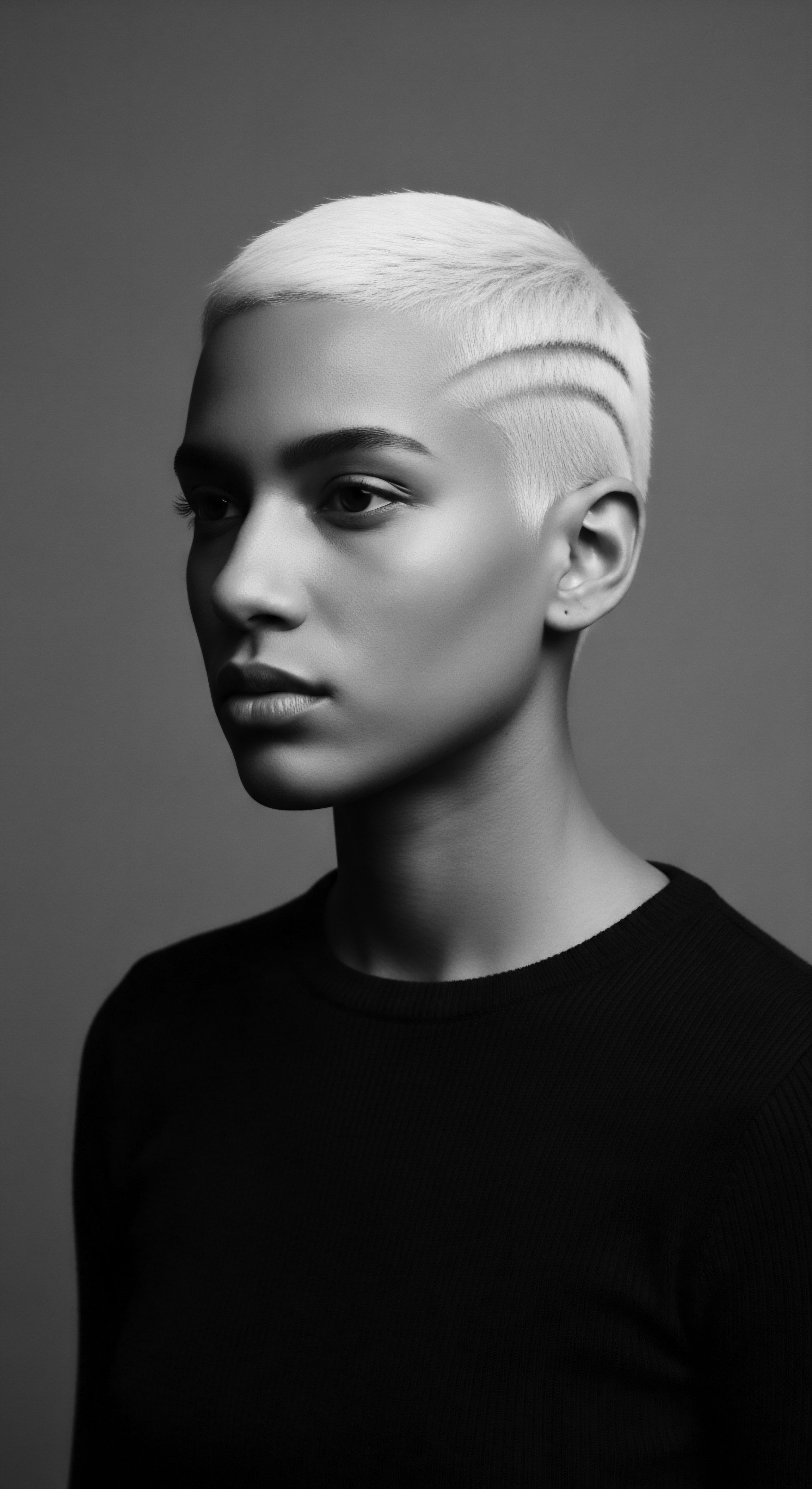
Hair as a Living Canvas
While Uli is renowned for its skin and wall applications, its principles extend to the expressive realm of textured hair. In Igbo society, hair has always held significant cultural, social, and spiritual weight. Hair serves as a marker of identity, signifying age, marital status, social standing, and even specific occasions. The elaborate traditional hairstyles of Igbo women, such as Isi Ntukwu (Bantu knots) or Isi Owu (threaded hair), share a philosophical alignment with Uli Art’s emphasis on linear patterns, geometric precision, and the body as a site of symbolic expression.
The connection resides in the shared approach to the body as a medium for artistic declaration. Just as Uli designs transform skin into a narrative surface, traditional hair styling transforms textured strands into architectural forms that convey identity and cultural narratives. The meticulous braiding, coiling, and threading techniques used in these hairstyles reflect the same careful attention to line, symmetry, and rhythmic repetition evident in Uli painting.
Indeed, historical records and ethnographic photographs, such as those by Northcote Thomas from 1911, document instances of “uli-like hair designs” and the presence of Uli motifs influencing hair and facial scarification, indicating a broader aesthetic repertoire where Uli principles informed various forms of bodily adornment. This suggests that the expressive vocabulary of Uli extended to hair, informing its sculptural possibilities and symbolic applications.
| Aspect of Adornment Primary Medium |
| Uli on Skin (Traditional) Skin (body, face, limbs) |
| Textured Hair Artistry (Traditional & Contemporary) Hair strands and scalp |
| Aspect of Adornment Artistic Practice |
| Uli on Skin (Traditional) Painting with natural dyes; freehand strokes |
| Textured Hair Artistry (Traditional & Contemporary) Braiding, twisting, coiling, threading; sculptural forms |
| Aspect of Adornment Core Elements |
| Uli on Skin (Traditional) Curvilinear lines, abstract motifs, negative space |
| Textured Hair Artistry (Traditional & Contemporary) Geometric patterns, linear designs, volumetric shapes |
| Aspect of Adornment Materials Used |
| Uli on Skin (Traditional) Uli plant extracts; sometimes camwood (uhie) |
| Textured Hair Artistry (Traditional & Contemporary) Natural hair; threads (e.g. Isi Owu), beads, cowries, shells, natural oils. |
| Aspect of Adornment Cultural Meaning |
| Uli on Skin (Traditional) Identity marker, spiritual connection, beauty enhancement for rites/celebrations. |
| Textured Hair Artistry (Traditional & Contemporary) Identity marker, social status, age, marital status, spiritual beliefs, communal affiliation. |
| Aspect of Adornment Ephemeral Nature |
| Uli on Skin (Traditional) Temporary, fading after a few days. |
| Textured Hair Artistry (Traditional & Contemporary) Temporary, restyled periodically, or semi-permanent (braids); allowing for change and renewal. |
| Aspect of Adornment Role of Artist |
| Uli on Skin (Traditional) Skilled women artists creating designs. |
| Textured Hair Artistry (Traditional & Contemporary) Skilled hair artists, often women, passing knowledge through generations. |
| Aspect of Adornment The underlying philosophy of Uli, emphasizing body as canvas and symbol, extends naturally to the intricate world of textured hair, recognizing it as a profound site for cultural expression and identity. |
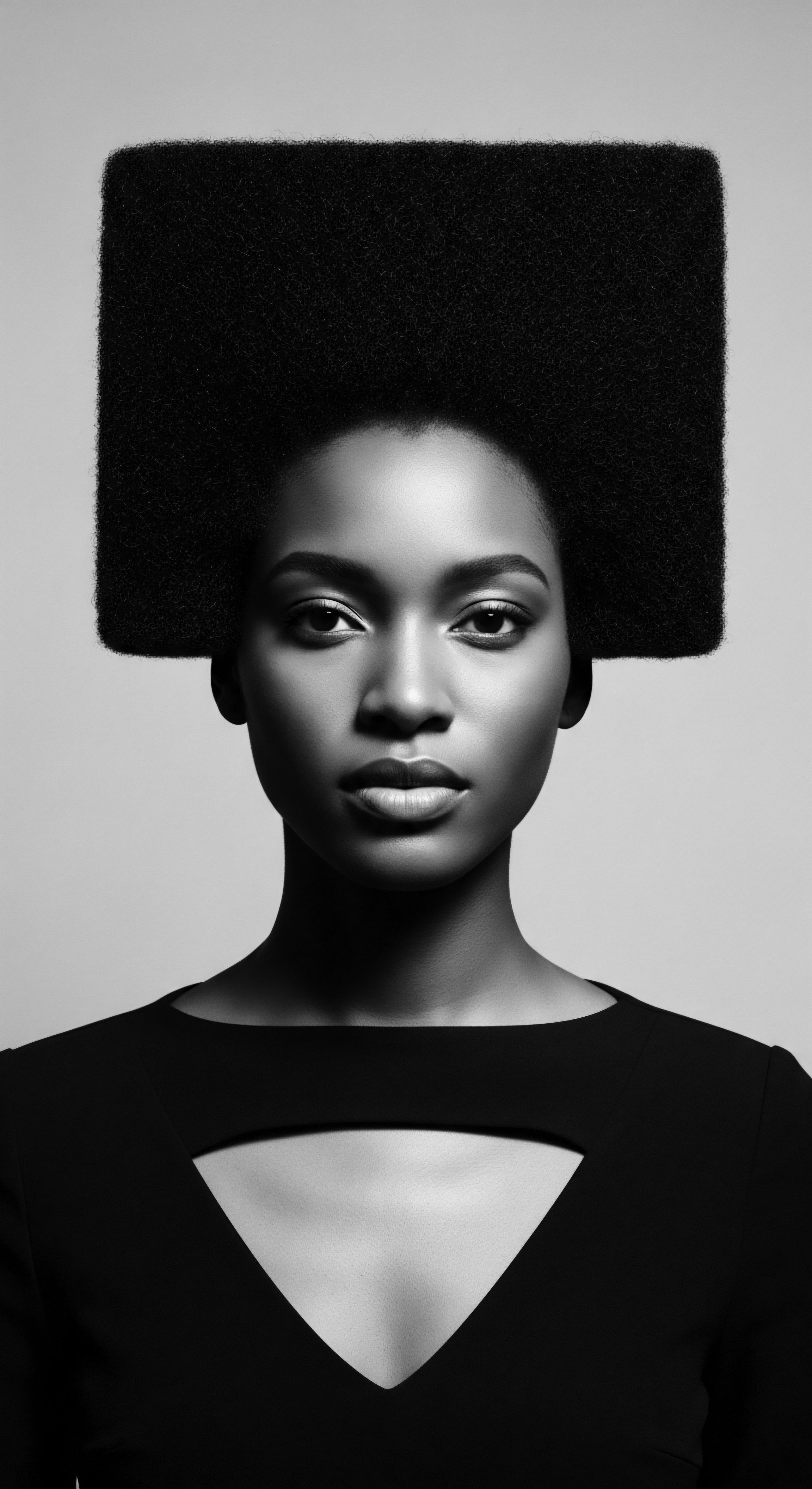
Uli and the Ancestral Wisdom of Care
The connection between Uli Art and hair also finds resonance in ancestral care practices. The preparation of Uli dyes from natural plants reflects a deep understanding of botanical properties and their interaction with the body. This echoes traditional hair care wisdom, which historically relied on indigenous ingredients like shea butter, palm kernel oil, or specific herbal remedies for nourishment, protection, and styling.
The meticulous preparation of these natural substances, whether for Uli application or hair treatment, speaks to a shared commitment to drawing from the earth’s bounty for well-being and beauty. This tradition of care is not merely utilitarian; it is an act of reverence for the body and a continuation of practices passed down through generations.
The Igbo people, like many other African cultures, saw hair not merely as biological growth but as a sacred part of the body, often linked to spiritual energy and ancestral connection. This belief informed the careful tending of hair, making its styling and adornment acts of spiritual significance. Uli Art, with its capacity to transform the physical into the symbolic, serves as a powerful conceptual framework for understanding the profound cultural weight placed on hair in these communities.
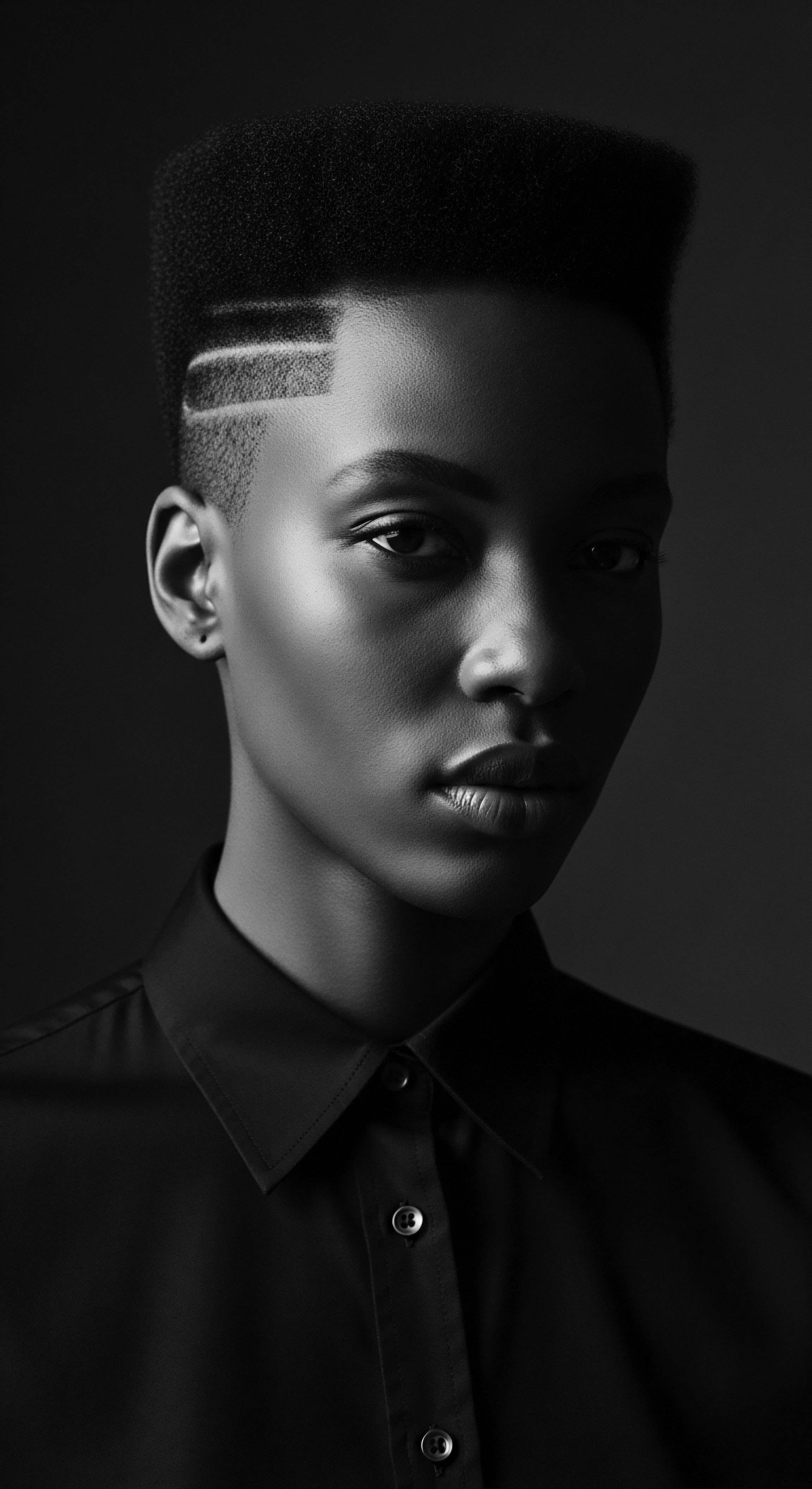
Academic
Uli Art, from an academic standpoint, requires a nuanced understanding that moves beyond its classification as a mere regional artistic tradition. It represents a sophisticated philosophical and aesthetic system of meaning-making, indigenous to the Igbo people of southeastern Nigeria. The practice is fundamentally characterized by its ephemeral nature, utilizing organic dyes from plants, such as Pterocarpus mildbraedii or various Rothmania species, to temporarily adorn the body and architectural surfaces. Its central tenets involve a delicate balance of line, space, and form, generating abstract and curvilinear motifs that are simultaneously grounded in observed reality and imbued with symbolic, ideographic content.
As Ikwuemesi (2019) posits, Uli operates as an “ideogram,” capable of articulating aspects of the Igbo worldview and philosophy through its minimalist tendencies. This intrinsic link to a holistic cosmology positions Uli not as isolated art but as an integral component of a comprehensive cultural vocabulary, encompassing social, religious, and aesthetic functions.

The Semiotics of Uli ❉ A Cultural Language
The meaning embedded within Uli designs is far from arbitrary; it functions as a visual semiotic system. These motifs often act as mnemonic devices, representing specific concepts, proverbs, natural phenomena, or social codes. For instance, the spiral motif, or agwolagwo, frequently encountered in Uli, can denote continuity, protection, or the cyclical nature of existence.
The interplay between positive and negative space (ohere), a distinct characteristic of Uli composition, is not simply an aesthetic choice; it speaks to the Igbo concept of duality and interdependence, where the unpainted areas are as significant as the drawn lines. This dynamic relationship between form and void underscores a profound cognitive process, where visual perception is trained to discern meaning from suggestion and implication.
Scholarly investigations into Uli have often highlighted its performative aspect. The drawing of Uli is a live art, executed freehand with assured strokes, rarely allowing for erasure. This confidence of execution reflects not only the artist’s skill but also a deeply ingrained knowledge of the motifs and their cultural implications.
The communal gathering during Uli application further reinforces its social dimension, transforming an artistic endeavor into a collective ritual that binds individuals to their heritage and affirms group identity. This collective creative experience contrasts sharply with Western notions of individual artistic production.
Uli Art is a sophisticated cultural lexicon, each flowing line and negative space articulating a profound Igbo worldview and an enduring connection to heritage.
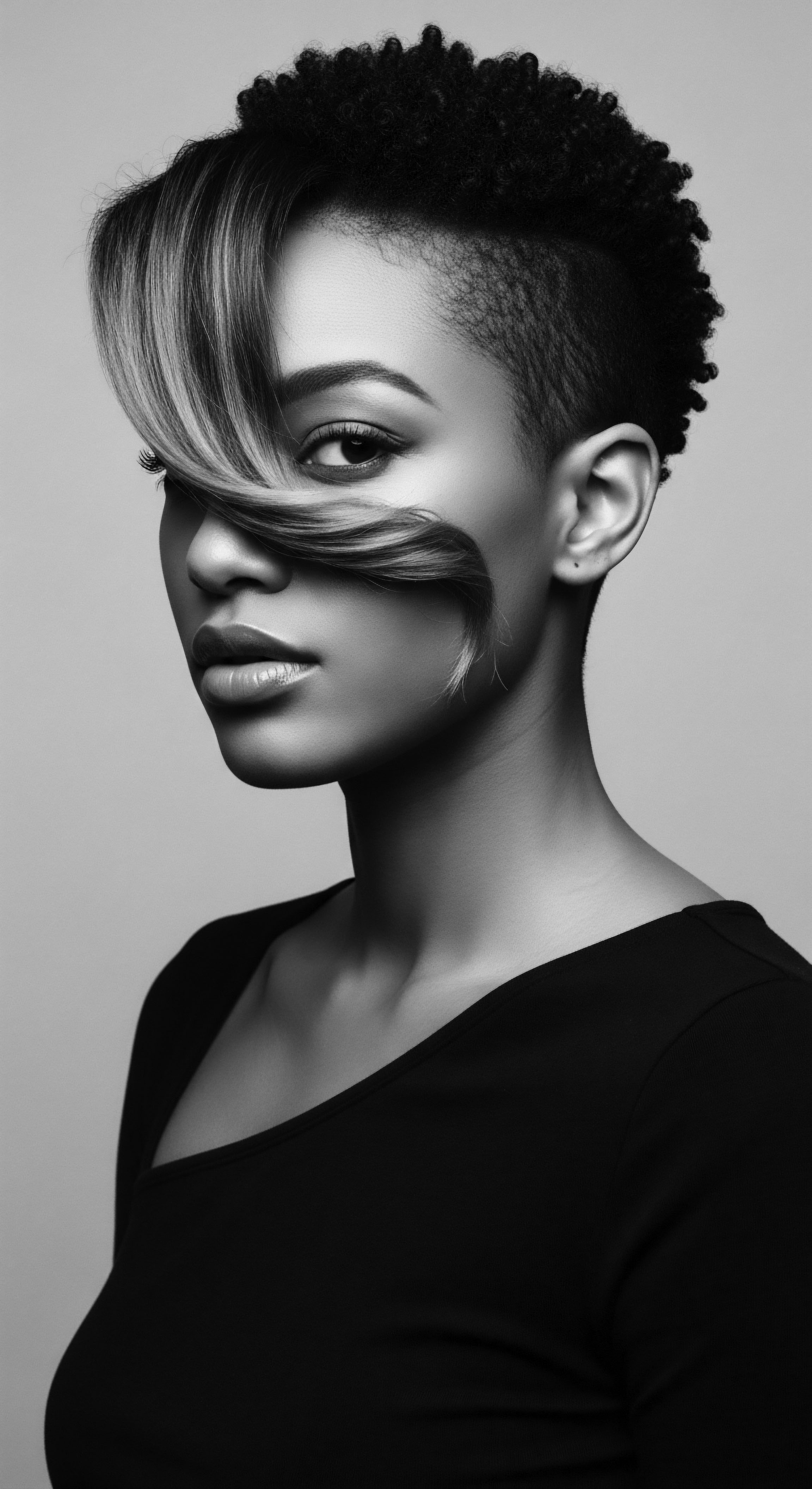
Uli Art and the Textured Hair Heritage ❉ An Extended Interpretation
The profound link between Uli Art and textured hair heritage, particularly within Black and mixed-race communities, extends beyond superficial aesthetic parallels. It resides in a shared philosophy of the body as a sacred canvas for expression, a living archive of identity and ancestral practice. Textured hair, with its inherent coil and curl patterns, offers a sculptural medium akin to the three-dimensional forms often explored in Igbo artistry.
Traditional African hair practices, particularly among the Igbo, consistently transformed hair into complex designs that mirrored the precision and symbolic depth found in Uli. Hairstyles were not mere adornments; they served as potent visual markers, communicating age, marital status, social roles, and even spiritual beliefs.
Consider the historical use of hair threading, known as Isi Owu among the Igbo, a practice documented for centuries that involves wrapping hair with black thread. This technique, traditionally worn by young, unmarried girls, not only signifies youthfulness but also serves a protective function, stretching hair and promoting its health. The repetitive, linear wrapping of strands in Isi Owu directly echoes the linear precision and pattern-making core to Uli aesthetics.
The hair, through this technique, becomes a structured, designed surface, much like a body adorned with Uli. This connection is not merely incidental; it speaks to a pervasive aesthetic sensibility that views the human form, including its hair, as a primary site for cultural inscription and artistic intervention.
A significant observation by anthropologists such as Northcote Thomas in early 20th-century Nigeria provides concrete evidence of this interconnectedness. His photographic archives from 1911 include images not only of Uli murals but also of “uli-like hair designs” and the integration of Uli motifs into hair and facial scarification. This historical documentation reveals that the artistic vocabulary of Uli extended beyond body painting to encompass the broader aesthetic repertoire of bodily adornment, inherently including hair. The designs on hair, therefore, were not isolated stylistic choices but part of a larger, cohesive system of cultural expression that Uli defined.
The scientific understanding of textured hair’s unique structural properties—its elliptical follicle shape, varied curl patterns, and susceptibility to environmental factors—underscores why ancestral practices centered on protection and manipulation through techniques like threading became so vital. Modern trichology validates the protective benefits of techniques that minimize manipulation and preserve moisture, aligning with the outcomes of traditional practices. The Uli philosophy, which respects and enhances the natural form, aligns perfectly with an approach to textured hair that seeks to work with its inherent structure, rather than against it.
| Principle of Uli Art Emphasis on Line & Form |
| Application to Textured Hair Heritage Intricate braiding, coiling, threading, and wrapping techniques create geometric and linear patterns on the scalp and hair, reflecting artistic design. |
| Principle of Uli Art Connection to Nature |
| Application to Textured Hair Heritage Traditional hair care often uses natural ingredients (shea butter, palm oil, herbs) derived from indigenous plants, aligning with Uli's use of natural dyes. |
| Principle of Uli Art Identity & Social Communication |
| Application to Textured Hair Heritage Hairstyles communicate social status, age, marital status, and community affiliation, functioning as a visual language. |
| Principle of Uli Art Temporality & Renewal |
| Application to Textured Hair Heritage Hair styles are changed for different life stages or occasions, allowing for continuous re-expression of identity and artistic renewal, much like Uli body art. |
| Principle of Uli Art Communal Practice |
| Application to Textured Hair Heritage Hair braiding and styling often serve as communal bonding activities, passing down skills and stories through generations. |
| Principle of Uli Art Well-being & Protection |
| Application to Textured Hair Heritage Beyond aesthetics, traditional hair styles like threading offer protective benefits for textured hair, minimizing damage and encouraging growth. |
| Principle of Uli Art The deep respect for natural forms and the body as a communicative medium provides a conceptual bridge between Uli's visual language and the living artistry of textured hair traditions. |
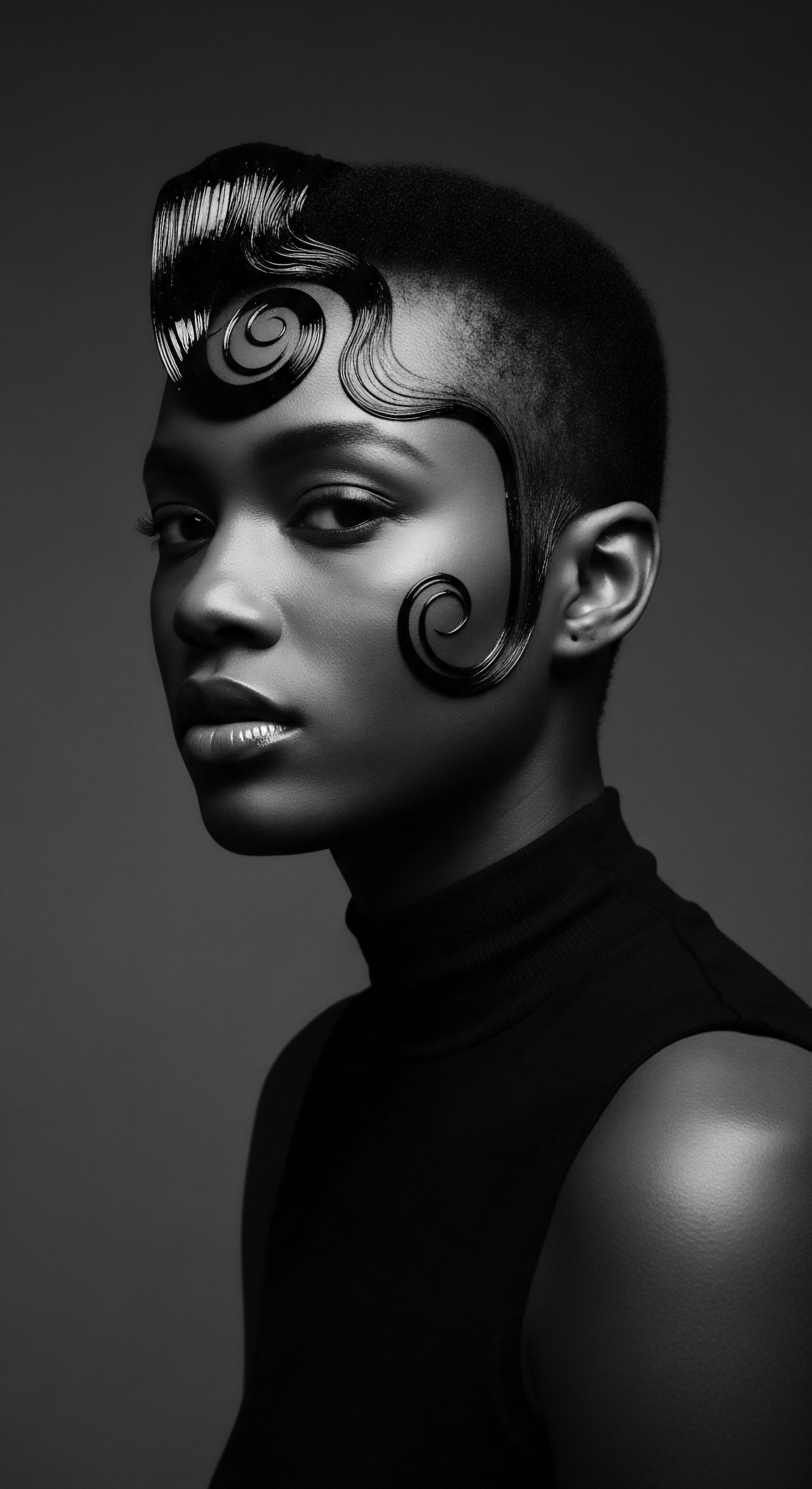
A Case Study in Continuity ❉ The Jioha Rite of Passage
A particularly illuminating case study that powerfully illustrates the Uli Art’s connection to textured hair heritage and ancestral practices comes from the documentation of the Jioha Rite-Of-Passage Ceremony in Effium, Nigeria. This ceremony, a surviving tradition that closely resembles autochthonous Uli design practice, involves not only body adornment but also “designing sessions for body, hair and complimentary adornments” for young male adults and betrothed girls. The meticulous documentation of this ritual captures the preparation of Uli dye, the artistic skills of indigenous Uli designers, and the public exhibition of these designs.
This explicit inclusion of hair within the Uli design process during a significant life transition (Jioha rite for young adults and betrothed girls) offers a concrete historical example of how Uli’s aesthetic and symbolic principles were directly applied to hair. It demonstrates that hair, in its styled and adorned forms, was an integral part of the holistic presentation of identity during crucial life stages, reflecting the Uli ethos of comprehensive bodily expression.
This example highlights a broader truth ❉ hair, especially textured hair, in African cultures was seldom viewed in isolation. It was an extension of the self, deeply intertwined with spiritual beliefs, social structures, and aesthetic ideals. The act of hair styling was often a communal endeavor, a moment of intergenerational transmission of knowledge and values. As observed in pre-colonial African societies, hairstyles conveyed messages about age, marital status, tribal affiliation, and even spiritual beliefs.
The cornrow style, for instance, known as Ojiugo among the Igbo, dates back to at least 3000 BCE in West African cultures and is associated with royalty, symbolizing elegance and tradition. The geometric precision and linear flow of cornrows resonate with the abstract, linear qualities characteristic of Uli. The hair itself became a dynamic medium for expressing these enduring cultural narratives, its coils and kinks sculpted into forms that held profound meaning.
This deep integration means that the care given to textured hair was not merely about hygiene but about reverence for its ability to embody identity. Natural ingredients, passed down through generations, were chosen not only for their practical benefits but also for their symbolic connection to the earth and ancestral wisdom. For example, the widespread use of Shea Butter across West Africa, including Nigeria, in traditional hair care routines speaks to a deep ancestral knowledge of its moisturizing and healing properties for textured hair.
This substance, derived from the shea tree, is rich in vitamins and fatty acids, offering hydration and promoting elasticity. The continued reliance on such natural bounties mirrors the Uli artist’s commitment to using plant-based dyes, underscoring a continuous lineage of drawing from the earth for both adornment and well-being.
Furthermore, the academic analysis of Uli art cannot disregard its adaptive capacity. While rooted in tradition, Uli has shown a remarkable ability to evolve and inspire contemporary artistic expressions. The “Nsukka School” of art, for example, pioneered by artists like Uche Okeke, actively drew upon Uli motifs and philosophy in modern painting, demonstrating its enduring relevance and adaptability. This adaptability suggests that the spirit of Uli, a creative system deeply connected to identity and environment, can continue to inform and inspire innovative approaches to textured hair care and styling in contemporary contexts, serving as a guiding principle for practices that honor ancestral wisdom while embracing modern understanding.
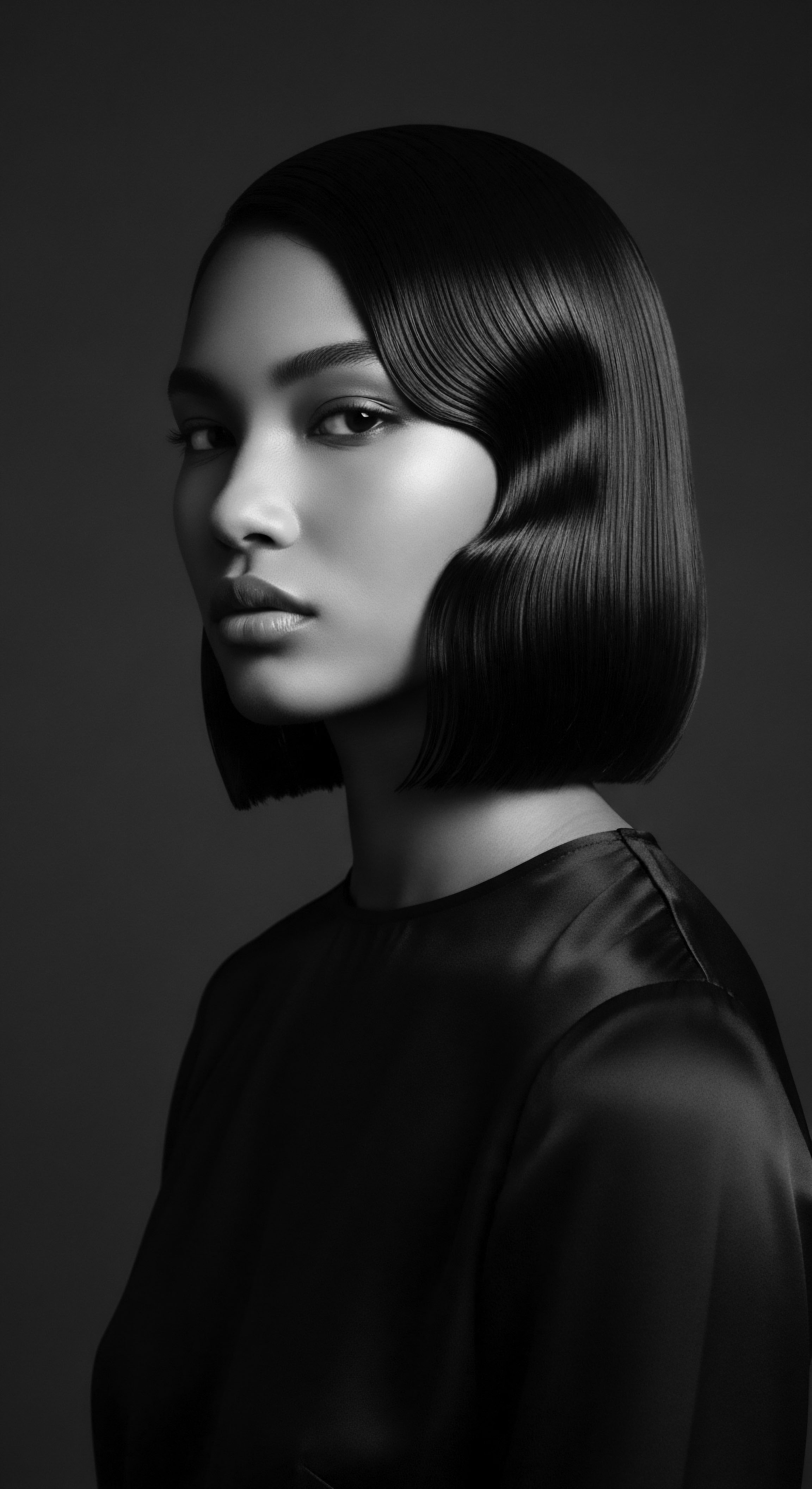
Challenging Eurocentric Paradigms ❉ An Afrocentric Lens on Uli and Hair
An Afrocentric perspective on Uli Art and textured hair heritage offers a powerful counter-narrative to Eurocentric beauty standards that historically devalued natural Black hair textures. For centuries, textured hair was often described as “wild,” “untamable,” or “unprofessional,” leading to widespread pressure for Black women to chemically alter their hair to conform to a straighter, European aesthetic. This imposition of external beauty norms not only impacted personal self-perception but also severed connections to deeply rooted ancestral hair traditions.
Uli Art, when viewed through this Afrocentric lens, stands as a testament to indigenous systems of beauty and self-expression that predated and resisted colonial impositions. The Igbo people’s celebration of intricate, flowing lines and symbolic forms on the body, including hair, represents an inherent cultural value placed on African aesthetics. The persistence of traditional hairstyles like Isi Owu or Isi Ntukwu, despite historical pressures, serves as a powerful act of cultural retention and resistance. These practices are not simply about hair; they are about maintaining cultural continuity, reclaiming identity, and affirming an ancestral legacy of self-adornment that is both beautiful and meaningful.
The re-emergence of natural hair movements globally can be seen as a contemporary manifestation of this ancestral spirit, a collective return to the self-acceptance and cultural pride embodied by Uli Art. Modern movements advocate for a return to chemical-free hair care and the celebration of natural textures, echoing the wisdom of traditional practices that prioritized healthy hair through indigenous ingredients and methods. This shift reflects a conscious realignment of identity with African roots and cultural expressions, recognizing that hair, like Uli, is a profound carrier of cultural memory and a site of ongoing self-determination.
The philosophy inherent in Uli Art, which regards the body as a sacred canvas for expressing lineage and spirit, directly challenges the notion that textured hair needs to be “tamed” or altered to meet external standards. Instead, it invites an appreciation for its inherent strength, versatility, and capacity for complex, symbolic expression. By understanding Uli in this expanded context, we access a deeper comprehension of how ancestral communities conceived of beauty, identity, and the profound connection between the individual and their cultural heritage, all of which are beautifully mirrored in the rich, diverse world of textured hair.
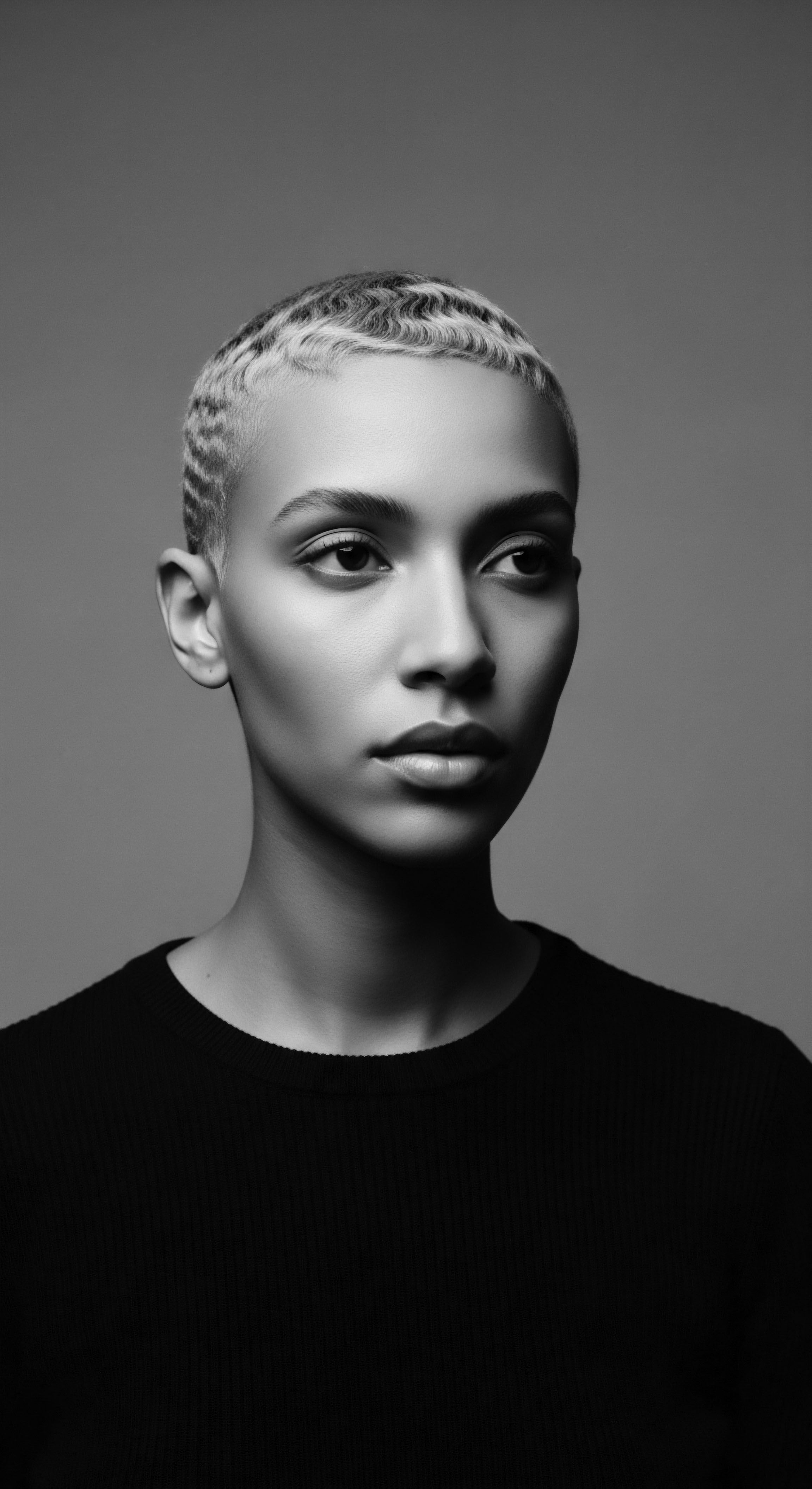
Reflection on the Heritage of Uli Art
The journey through Uli Art’s expansive definition, from its simple origins to its profound symbolic depths, reminds us that heritage is a living, breathing current, not a static relic. Uli, with its flowing lines and ephemeral grace, offers more than a historical footnote; it extends an invitation to reconnect with the enduring wisdom of ancestral practices. For those of us touched by the rich legacy of textured hair, this connection is particularly resonant. Our coils, kinks, and waves carry echoes of generations who understood hair not as a mere biological attribute but as a profound carrier of identity, a canvas for storytelling, and a conduit to the spiritual realm.
Roothea’s perspective is one of reverence, recognizing that the very structure of textured hair itself aligns with the curvilinear and organic principles evident in Uli designs. It is a biological reality that finds its aesthetic mirror in an ancient art form. The meticulous care, the communal gatherings for styling, the use of natural ingredients passed down through time – these are not just routines; they are rituals, acts of continuity that link us directly to those who came before. In tending to our hair with this understanding, we do more than maintain its physical health; we honor a lineage of self-adornment and cultural affirmation.
The spirit of Uli encourages us to see our hair as a dynamic expression of our heritage, allowing for both the preservation of traditional forms and the creation of new ones, all rooted in an authentic cultural sensibility. This understanding allows us to find beauty in every strand, recognizing its unique texture as a testament to resilience, creativity, and the unbroken thread of ancestral knowledge. The soulful pursuit of wellness in textured hair, then, becomes an act of profound self-acceptance, a celebration of inherited beauty, and a quiet yet powerful declaration of belonging to a legacy of richness and enduring spirit. It is a continuous dialogue with the past, informing a vibrant present, and shaping a future where every helix tells a story of identity and strength.

References
- Ezeme, I. (2025). List of Igbo Women Traditional Hairstyles, Its Beauty and Significance. Ozi Ikòrò.
- SCOREline. (2024). THE EVOLUTION OF TRADITIONAL IGBO HAIRSTYLES ACROSS THE ERAS. SCOREline.
- Afriklens. (2024). African Hairstyles ❉ Cultural Significance and Legacy. Afriklens.
- The Guardian Nigeria News. (2024). Natural Hair In Nigerian Space ❉ To Fight Or Flight?. The Guardian Nigeria News.
- Assendelft. (n.d.). Pre-Colonial African Hairstyles ❉ A Journey Through Time and Culture. Assendelft.
- My Sasun. (2023). Exploring the Rich World of Nigerian Hair and Beauty Products. My Sasun.
- Ogbonoblog. (2024). Common Igbo Hairstyles and Their Cultural Significance. Ogbonoblog.
- Igbo Cultural Heritage. (2024). Igbo Women’s Hairstyles ❉ A Rich Heritage of Culture and Art. Igbo Cultural Heritage.
- Entanglements. (2021). Uli ❉ art and archive. Entanglements.
- Nsukka Journal of the Humanities. (2022). Hybridity of Uli and Nsibidi African Motifs and Ideas in Contemporary Video Art. Nsukka Journal of the Humanities.
- Utoh-Ezeajugh, T. C. Ebekue, E. & Emeka-Nwobia, N. U. (2021). Speaking Bodies ❉ Documenting Uli Body Designs of the Igbo of Nigeria. Speaking Bodies.
- alache. (2020). Uli ❉ The pursuit of beauty. alache – WordPress.com.
- Chudi-Duru, C. C. (n.d.). A Survey of Uli Symbolic Motifs of the Igbo and their Adaptation to Woven Rugs in Contemporary Textile Art. Nigerian Journals Online.
- Gatwiri, K. (2023). The politics of black hair ❉ an Afrocentric perspective. Dr. Kathomi Gatwiri.
- Utoh-Ezeajughi, T. C. (2017). Body Adornment Practises in Nigerian Culture a Multi-Ethnic Investigation. ResearchGate.
- iProject Download. (n.d.). A Design of a Batik Duvet Exploring Uli Motifs. iProject Download.
- SciSpace. (n.d.). Ethnic Traditions, Contemporary Nigerian Art and Group Identity. SciSpace.
- The Culture Custodian. (2024). 10 Nigerian Hair Care Brands You Should Know About. The Culture Custodian.
- allAfrica.com. (2015). Nigeria ❉ The Kinky Apothecary Revolution. allAfrica.com.
- TRIP DOWN MEMORY LANE. (n.d.). HAIRSTYLES IN AFRICAN CULTURE. TRIP DOWN MEMORY LANE.
- IROKO Theatre Company. (2024). Hair As Heritage. IROKO Theatre Company.
- MIT Press Direct. (2024). Uli ❉ The Colonial Archive as Decolonial Cultural Resource. African Arts.
- African Journals Online. (n.d.). Visuality and Representation in Traditional Igbo Uli Body and Mud Wall Paintings. African Journals Online.
- Onyekelu, A. C. (n.d.). Igbo Traditional Rites of Passage ❉ A Study of Conception/Pregnancy and Birth In. Nigerian Journals Online.
- Scholar Commons. (n.d.). Examining Afrocentricity and Identity Through the Reemergence and Expression of Natural Hair i. Scholar Commons.
